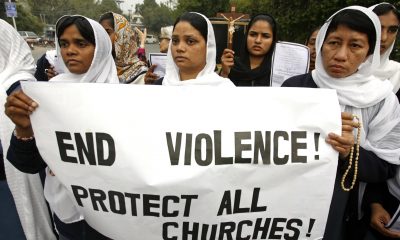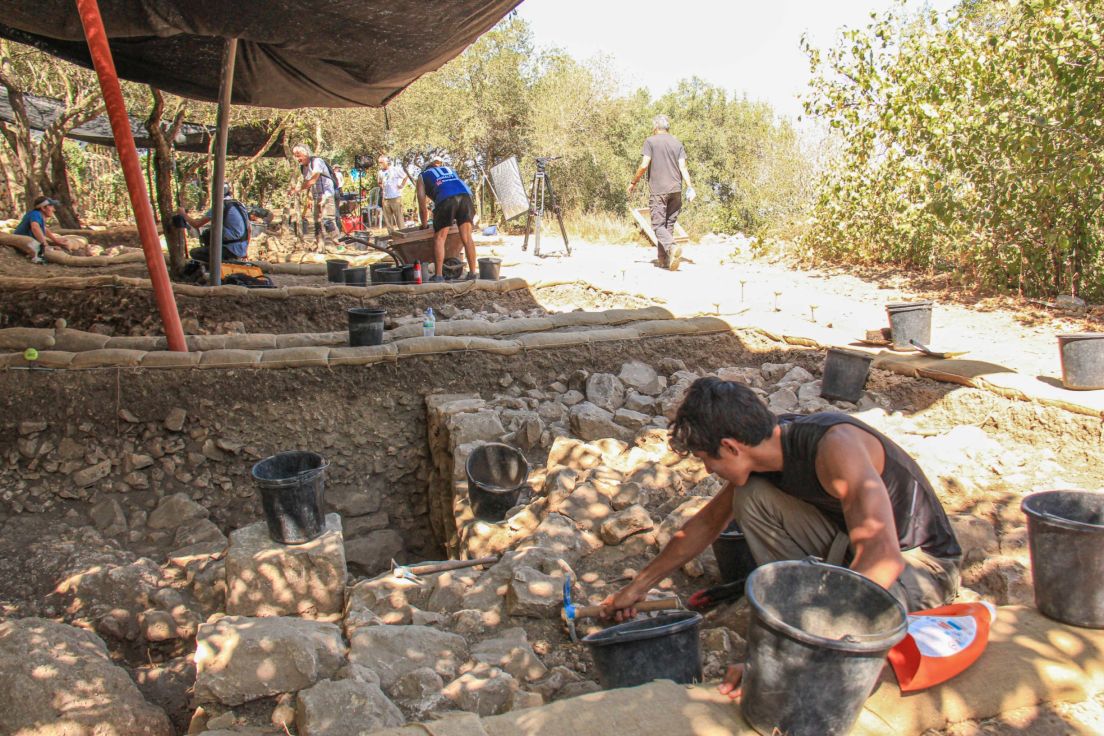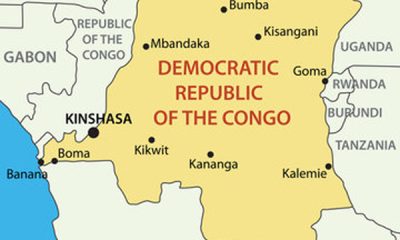world news
Italian Scientific Technique Dates Shroud of Turin to Around the Time of Christ’s Death and Resurrection
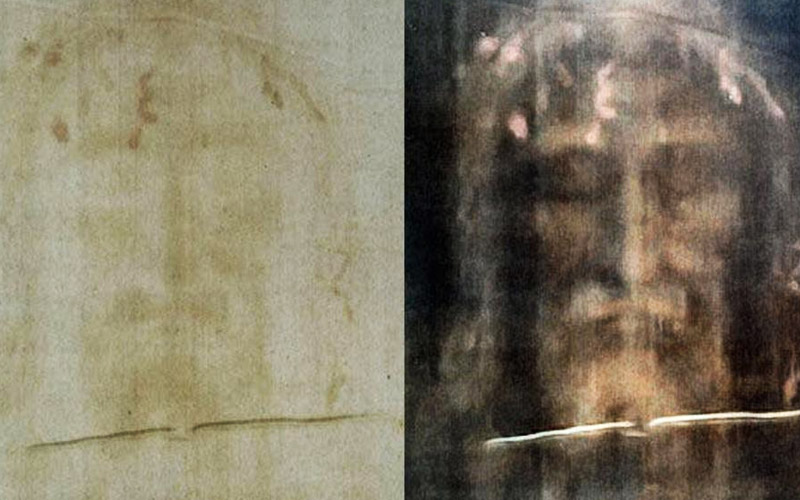
An Italian scientist is claiming a new technique using X-ray dating shows the Holy Shroud of Turin to be much older than some scientists have stated, and that it does in fact coincide with Christian tradition by dating back to around the time of Christ’s death and resurrection.
Working with a team of other researchers, Liberato De Caro of Italy’s Institute of Crystallography of the National Research Council in Bari used a “Wide-Angle X-ray Scattering” method to examine the natural aging of cellulose that constitutes a sample of the famous linen cloth.
They concluded that their peer reviewed research shows the Holy Shroud is compatible with the hypothesis that it is much older than seven centuries old — the conclusion reached in 1988 using carbon dating techniques — and is around 2,000 years old.
In this April 13 email interview with the Register, De Caro, who has been investigating the Holy Shroud for 30 years, explains more about the discovery, why he believes the X-Ray technique is superior to carbon dating for determining the age of fabric fibers, and discusses other recent discoveries that also point to the Holy Shroud’s authenticity.
Dr. De Caro, please could you share with us in layman’s terms your findings regarding the Holy Shroud of Turin?
The Shroud of Turin is the most important relic of Christianity. According to Christian tradition, it is the burial shroud that would have wrapped the body of Jesus after his crucifixion.
For about 30 years, I have been using investigative techniques on the scale of atoms, in particular through X-rays, and three years ago we developed a new method for dating samples taken from linen fabrics. A macroscopic example of a fabric microfiber is like that of a bundle of spaghetti: at first they all have the same length, but if you subject the bundle to accidental shocks, the more the shocks increase, the more the spaghetti breaks. As the number of shocks increases, always of the same intensity, the average length of the spaghetti decreases over time, until it reaches a minimum length.
A similar thing happens to the polymer chains of cellulose which, like spaghetti but with a section on the scale of a billionth of a meter, gradually break over the centuries due to the combined effect of temperature, humidity, light and the action of chemical agents in the environment in which they are found. Natural aging depends only on ambient temperature and relative humidity. We have therefore developed a method to measure the natural aging of flax cellulose using X-rays and then convert it into time elapsed since fabrication. The new dating method, based on a technique called Wide Angle X-ray Scattering, was first tested on linen samples already dated using other techniques, on samples that had nothing to do with the Shroud, and then applied to a sample taken from the Shroud of Turin.
How long did your research take and has it, or will it be, peer reviewed?
The research started in 2019 but then the pandemic regrettably caused delays. We finally applied the new X-ray dating technique to a sample of the Shroud of Turin, and the findings of the research were published in the international journal Heritage after about a month of preparation and revision, during which our work was evaluated and peer reviewed by three other independent experts and the journal’s editor. The research has also been highlighted on the website of the Consiglio Nazionale delle Ricerche [Italy’s National Research Council].
The study was carried out in the X-ray laboratories of the Institute of Crystallography of the National Council of Research (Bari, Italy), in collaboration with Professor G. Fanti of the University of Padua.
Has the Wide-Angle X-ray Scattering method been used before?
The first published paper from 2019 demonstrated the reliability of the new X-ray dating technique on a series of samples, taken from linen fabrics ranging in age from 3000 BC to 2000 AD (see black, red, green and blue curves in the figure below). These curves show that the sample of the Shroud of Turin (orange curve in the picture) should be much older than the approximately seven centuries indicated by the radio-dating carried out in 1988. [To see the same figure with axes and scientific detail see here].
How accurate are the methods you’ve used compared to the carbon dating methods previously used, particularly the research used in 1988?
In 1988, carbon-14 dating [also called radiocarbon dating, a method of age determination that depends upon the decay to nitrogen of radiocarbon] of samples taken from the Shroud by three separate laboratories indicated that it should only be about seven centuries old. Therefore, according to the results of the radio-dating, the shroud wouldn’t be an authentic relic since it is from the medieval period. However, fabric samples are usually subject to all kinds of contamination, which cannot always be controlled and completely removed from the dated specimen. About half the volume of a natural fiber yarn is empty space, interstitial space, filled with air or something else, between the fibers that compose it. Anything that gets in between the fibers must be carefully removed. If the cleaning procedure of the sample is not thoroughly performed, carbon-14 dating is not reliable. This may have been the case in 1988, as confirmed by experimental evidence showing that when moving from the periphery towards the center of the sheet, along the longest side, there is a significant increase in carbon-14 [radiocarbon].
In short, we are dealing with two dating techniques — radiocarbon and X-ray — which have very different results. In such cases, when two different techniques do not agree on a date, caution is required before final conclusions are reached. The technique of dating linen by X-ray is non-destructive. Therefore, it can be repeated several times on the same sample. Considering the results of medieval dating obtained by carbon-14, and those obtained by WAXS analysis which show compatibility with 2000 years of history, it would be more than desirable to have a collection of X-ray measurements carried out by several laboratories, on several samples, at most millimetric in size, taken from the Shroud. The technique using X-rays requires very small tissue samples, with linear dimensions even smaller than 1 mm, and this is an advantage compared to radio-dating, which usually requires much larger samples and is destructive, since only one measurement of the carbon-14 content can be made on the same sample.
What is your view on other theories that are said to prove the authenticity of the Holy Shroud, for example botanical evidence found in 1999, or radiation caused by an earthquake that induced the image on the shroud?
The documented history of the Shroud spans seven centuries and all of it located in Europe. Based on the results of radio-dating, the Shroud would be seven centuries old and has always been in Europe. However, the earlier study of pollen trapped in its fibers had already shown a consistent presence of pollen from the Middle East, in particular from the ancient region of Palestine, as if the Shroud had been in that geographical area and not in Europe for a significant period of its history.
In order to be more certain about the pollen, we could go back to analyzing the Shroud with the aim of understanding in which geographical areas it might have been. In fact, our study has shown that dating depends on the average secular temperature of the geographical region in which the linen artefact was preserved. The presence of pollen or minerals typical of some regions and not of others could help clarify its ‘hidden history,’ its presence in other geographical regions characterized by much higher temperatures than those in Europe.
The Shroud of Turin challenges science, and each new piece of research could clarify part of the complex puzzle this relic represents. For example, the Shroud’s image has yet to find a definitive explanation from those who have studied it, an explanation shared by the entire scientific community. It is as if a photographic plate had been imprinted by radiation. By studying the traces left on the plate, one tries to trace the nature of the radiation and its properties. The same could be done for the Shroud’s image.
For this reason, the idea that a neutron flux could have enriched the linen fabric of the Shroud with carbon-14, distorting its radio-dating, dates back to 1989. One of two short contributions, one by T. J. Phillips, also published in the journal Nature, begins with these words: “If the Shroud of Turin is in fact the burial cloth of Christ, contrary to its recent carbon-dated age of about 670 years (Nature 335, 663; 1988 and 337, 611; 1989), then according to the Bible it was present at a unique physical event: the resurrection of a dead body. Unfortunately, this event is not accessible to direct scientific scrutiny.”
Therefore, if, from a scientific point of view, one rejects a priori to investigate the hypothesis of the resurrection and the traces that it could have left on the linen cloth, it is necessary to go in search of natural phenomena that, by chance, could have caused a consistent flow of neutrons, so as to change the isotopic abundance of carbon-14 of the shroud — as the hypothesis of the earthquake, to which you refer, proposes. At this point, one has to ask: do we have evidence anywhere else in the world of at least one scientifically verified case in which a natural phenomenon has changed the isotopic abundance of a chemical element?
Is there such evidence?
Yes, an answer to this question can be found at Oklo, a uranium deposit near Franceville, south-east Gabon, from which the fuel for French nuclear power stations is extracted. At enrichment plants, the concentration of uranium-235 in the ore extracted from the mines is always checked to ensure it is of natural origin. The proportion of uranium-235 in relation to all possible isotopes is fixed, and is also the same for lunar samples and meteorites.
In June 1972, a shipment arrived at Pierrelatte in France with a lower than natural composition, so much so that the authorities were alerted, and a scientific investigation began which lasted several months. It was discovered that in the past, in 17 strands of the deposit, the right conditions had been created so that the neutrons emitted in spontaneous fissions of uranium, slowed down by the water circulating in the deposit, could reproduce a chain reaction that locally reduced the natural isotopic abundance of uranium-235.
What does this example show? That sometimes, even in nature, very special conditions occur which, due to a combination of factors, make what has happened truly unique and unrepeatable. Therefore, wisdom should teach us to be very humble, respectful and prudent when studying natural phenomena, before coming to definitive conclusions that may sometimes be hasty and therefore wrong. Obviously, this is all the more true when it comes to the resurrection of Jesus Christ, a unique event in history which countless people believe. At least caution is warranted out of respect for this faith.
How significant are your findings for the Church and will the Vatican be involved in trying to authenticate them?
The Archdiocese of Turin more than the Vatican could be interested in this kind of research. In fact, in 2002 some threads were already taken from the Shroud and kept by the Archdiocese of Turin for future scientific studies. It would be enough to take 1-mm-long samples from these threads, combine them with other linen samples taken from other ancient fabrics of known date, and involve several laboratories in a dating experiment using the technique we have developed that uses X-rays. It could also be carried out as a blind experiment, that is, without laboratories knowing which samples are taken from the Shroud compared with those taken from other linen fabrics, to avoid any possible bias in the data analysis by the authors of the research.
Will you be doing more work on the Holy Shroud to further authenticate its true date?
It all depends on the possibility of having new samples to analyze. In any case, besides the Shroud, there are other important linen relics traditionally associated with Jesus, for example, the Sudarium of Oviedo or the Veil of Manoppello, which I have also studied in the past. This new dating technique is only in its infancy. It could, for example, also be extended to fabrics made from other plant fibers.
Sources:ncregister
world news
സൗദി റിയാലിന് പുതിയ ചിഹ്നം

റിയാദ് : സൗദി റിയാലിന് പുതിയ ചിഹ്നം പ്രഖ്യാപിച്ച് സൗദി അറേബ്യ. ദേശീയ കറൻസിയുടെ ഐഡന്റിറ്റി ശക്തിപ്പെടുത്തുന്നതിനുള്ള നടപടിയുടെ ഭാഗമായാണ് പുതിയ ചിഹ്നം അവതരിപ്പിച്ചത്. അറബിക് കാലിഗ്രാഫിയിൽ നിന്നും പ്രചോദനം ഉൾക്കൊണ്ടുള്ള ഒരു രൂപകൽപ്പനയാണ് ചിഹ്നത്തിൽ ഉപയോഗിച്ചിരിക്കുന്നത്.
പുതിയ ചിഹ്നം പുറത്തിറക്കിയ വേളയിൽ, സെൻട്രൽ ബാങ്ക് ഗവർണർ അയ്മാൻ അൽ സയാരി, രാജാവ് സൽമാൻ ബിൻ അബ്ദുൽ അസീസിനും കിരീടാവകാശിക്കും നന്ദി അറിയിച്ചു. റിയാൽ ചിഹ്നം പ്രാദേശിക, രാജ്യാന്തര തലങ്ങളിൽ രാജ്യത്തിന്റെ സാമ്പത്തിക ഐഡന്റിറ്റിക്ക് കരുത്തേകുമെന്നും അദ്ദേഹം പറഞ്ഞു. പുതിയ ചിഹ്നം ഉടൻ തന്നെ ഉപയോഗത്തിൽ വരുത്തുമെന്നും സാമ്പത്തിക, വാണിജ്യ ഇടപാടുകളിൽ ഇത് ക്രമേണ പ്രതിഫലിക്കുമെന്നും അദ്ദേഹം കൂട്ടിച്ചേർത്തു.
ദേശീയ സ്വത്വത്തിലും സാംസ്കാരിക ബന്ധത്തിലും അഭിമാനം വളർത്തുക, സൗദി റിയാലിന്റെ പദവി ഉയർത്തിക്കാട്ടുക, ആഗോള സമ്പദ്വ്യവസ്ഥയിൽ രാജ്യത്തിന്റെ സ്ഥാനം തെളിയിക്കുക എന്നിവയാണ് ചിഹ്നത്തിന്റെ ലക്ഷ്യങ്ങൾ.
Sources:globalindiannews
Saudi Arabia has introduced a new symbol for its local currency as part of efforts to establish the kingdom as a global financial hub.
The design, made up of Arabic calligraphy of the word riyal, will be implemented gradually for use in financial and commercial transactions, according to a statement from the country’s central bank.
The Saudi riyal has been pegged to the US Dollar since 1986 and is set at a fixed exchange rate of 3.75 riyals per $1. The peg has long helped the country facilitate international trade and investment, and serves the country’s broad Vision 2030 agenda to diversify the economy.
Under Crown Prince Mohammed bin Salman, the government has been spending hundreds of billions of dollars on everything from new cities to sports, tourism and technology. Saudi Arabia has also attracted hundreds of companies including Goldman Sachs Group Inc. and BlackRock Inc. to set up offices in Riyadh as it seeks to develop the capital into the Middle East’s premier business destination.
http://theendtimeradio.com
world news
കോംഗോയിലെ ദേവാലയത്തില് 70 ക്രൈസ്തവരെ ഇസ്ലാമിക് സ്റ്റേറ്റ്സ് തീവ്രവാദികള് കഴുത്തറത്ത് കൊലപ്പെടുത്തി
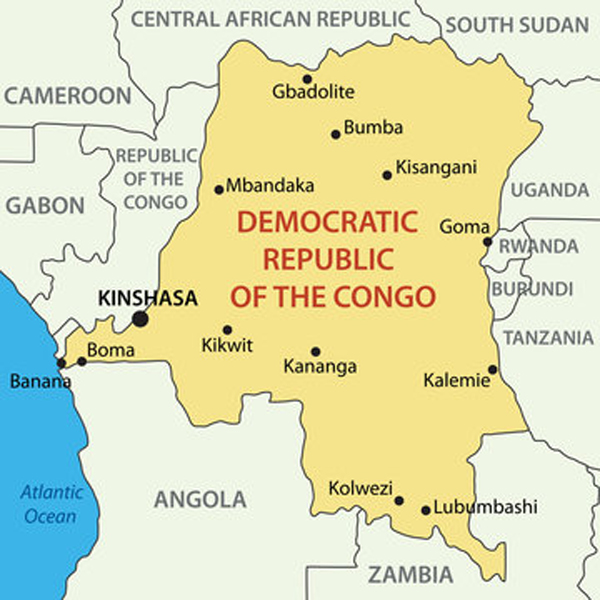
ബ്രാസാവില്ല: ആഫ്രിക്കന് രാജ്യമായ ഡെമോക്രാറ്റിക് റിപ്പബ്ലിക് ഓഫ് കോംഗോയിലെ ക്രൈസ്തവ ആരാധനാലയത്തില് എഴുപത് ക്രിസ്ത്യാനികളെ ശിരഛേദം ചെയ്ത നിലയിൽ കണ്ടെത്തി. രാജ്യത്തിൻ്റെ വടക്ക് കിഴക്കൻ ഭാഗത്ത് ക്രൈസ്തവ വിശ്വാസികൾക്ക് നേരെ നടന്ന ഏറ്റവും പുതിയ ആക്രമണമാണിതെന്ന് വിവിധ പ്രാദേശിക മാധ്യമങ്ങള് റിപ്പോര്ട്ട് ചെയ്യുന്നു. ഫെബ്രുവരി 13 വ്യാഴാഴ്ച പുലർച്ചെ 4 മണിയോടെ, ഇസ്ലാമിക് സ്റ്റേറ്റ്സുമായി ബന്ധമുള്ള സഖ്യകക്ഷികളായ ഡെമോക്രാറ്റിക് ഫോഴ്സിലെ (എഡിഎഫ്) തീവ്രവാദികളാണ് ആക്രമണം നടത്തിയത്.
എഡിഎഫ് തീവ്രവാദികൾ ഗ്രാമം വളഞ്ഞു 50 ക്രൈസ്തവ വിശ്വാസികളെ കൂടി പിടികൂടി. പിന്നീട് ഇരുപതു പേരെ കൂടി ബന്ദികളാക്കി 70 പേരെയും കസങ്കയിലെ പ്രൊട്ടസ്റ്റൻ്റ് ആരാധനാലയത്തില് കൊണ്ടുപോയി ദാരുണമായി കഴുത്ത് അറത്ത് കൊലപ്പെടുത്തുകയായിരിന്നുവെന്ന് വിവിധ മാധ്യമങ്ങള് റിപ്പോര്ട്ട് ചെയ്യുന്നു. ക്രൈസ്തവ നരഹത്യ അരങ്ങേറി ദിവസങ്ങള്ക്ക് ശേഷമാണ് പുറംലോകം വാര്ത്ത അറിയുന്നത്. സുരക്ഷ സാഹചര്യം താറുമാറായ പശ്ചാത്തലം കണക്കിലെടുത്ത് സംഭവത്തിന് മുന്പ്, പള്ളികളും സ്കൂളുകളും ആരോഗ്യ കേന്ദ്രങ്ങളും അടച്ചിരുന്നുവെന്ന് കോംബോ പ്രൈമറി സ്കൂൾ ഡയറക്ടർ മുഹിന്ദോ മുസുൻസി വെളിപ്പെടുത്തി.
രാജ്യത്തിൻ്റെ വടക്ക് കിഴക്കൻ മേഖലയിൽ എഡിഎഫ് തീവ്രവാദികൾ ഉയർത്തുന്ന ഭീഷണിയുടെ തുടർച്ചയാണ് ഏറ്റവും പുതിയ ഈ ദാരുണ സംഭവം. 2014-ൽ, നോർത്ത് കിവു പ്രവിശ്യയിലെ ബെനി പ്രദേശത്ത് സംഘം ആക്രമണം ശക്തമാക്കിയിരിന്നു. അതിനുശേഷം ആക്രമണങ്ങൾ ഇറ്റുരി പ്രവിശ്യയിലെ ഇരുമു, മംബസ പ്രദേശങ്ങളിലേക്ക് വ്യാപിച്ചു. കഴിഞ്ഞ മാസത്തിൽ മാത്രം, ബസ്വാഘ മേഖലയില് ഇരുനൂറിലധികം പേരെ സംഘം കൊന്നു. കഴിഞ്ഞ വർഷം, കോംഗോയില് 355 ക്രൈസ്തവരാണ് വിശ്വാസത്തിൻ്റെ പേരിൽ കൊല്ലപ്പെട്ടത്. മുൻ വർഷം 261 ആയിരുന്നു.
അതേസമയം 10,000 സാധാരണക്കാര് ആഭ്യന്തരമായി കുടിയൊഴിപ്പിക്കപ്പെട്ടു. ക്രൈസ്തവര് തിങ്ങി പാര്ത്തിരിന്ന നിരവധി ക്രിസ്ത്യൻ ഗ്രാമങ്ങൾ പൂർണ്ണമായും ഉപേക്ഷിക്കപ്പെട്ടു. റുവാണ്ടയുടെ പിന്തുണയുള്ള M23 വിമത ഗ്രൂപ്പാണ് സമീപകാല ആക്രമണങ്ങളില് ക്രൈസ്തവര്ക്ക് വലിയ ഭീഷണി ഉയര്ത്തിക്കൊണ്ടിരിക്കുന്നത്. കഴിഞ്ഞ വര്ഷം കോംഗോയില് ഇസ്ലാം മതം സ്വീകരിക്കാൻ വിസമ്മതിച്ചതിനെ തുടർന്ന് ഇസ്ലാമിക് സ്റ്റേറ്റ്സുമായി ബന്ധമുള്ള അക്രമികള് കത്തോലിക്ക വിശ്വാസികളെ കൊലപ്പെടുത്തിയ സംഭവത്തെ അപലപിച്ച് ഫ്രാന്സിസ് പാപ്പ രംഗത്ത് വന്നിരിന്നു.
കടപ്പാട് :പ്രവാചക ശബ്ദം
Christians in DRC have again been left reeling after a heinous act of violence that has left 70 believers dead. Please pray for our brothers and sisters in the country as they face escalating persecution.
Seventy Christians have been found beheaded in a church in the Democratic Republic of Congo (DRC), in what’s the latest devastating attack on believers in the north east of the country.
According to field sources, at around 4am last Thursday (13 February) suspected militants from the Allied Democratic Forces (ADF) – a group with ties to so-called Islamic State (IS) – approached homes in Mayba in the territory of Lubero, saying: “Get out, get out and don’t make any noise.” Twenty Christian men and women came out and were captured.
Shaken by this incident, people from the local community in Mayba later gathered to work out how to release those held captive. However, ADF militants surrounded the village and captured a further 50 believers.
All 70 of those kidnapped were taken to a Protestant church in Kasanga where they were tragically killed.
Muhindo Musunzi, director of the Kombo primary school [which belongs to the CECA20 church], says that prior to this incident, churches, schools and health centres had all shut their doors because of the chaotic security situation. “We had to move all activities towards Vunying,” he said.
Field sources report that, until Tuesday 18 February, some families had not been able to bury their dead because of insecurity in the area. Many Christians have now fled the area for their safety.
“We don’t know what to do or how to pray; we’ve had enough of massacres,” says an elder of the CECA20 church. “May God’s will alone be done.”
Rise in violence and internal displacement
This latest awful incident is a continuation of the escalating threat posed by ADF militants in the country’s north east region. In 2014, the group intensified attacks in Beni territory in North Kivu province, and since then attacks have spread to the territories of Irumu and Mambasa in Ituri province, and now it’s affecting Lubero. In the last month alone, the group have killed more than 200 people in Baswagha chiefdom, according to a local news website.
This explains why DRC rose six places to number 35 in the latest World Watch List. Last year, 355 were killed for their faith, compared with 261 the previous year, whilst an estimated 10,000 were internally displaced, which is ten times more than 2023. Houses have been looted and burnt, schools relocated, churches and health facilities closed, and several Christian villages have been abandoned altogether. The recent activities of the M23 rebel group, reportedly supported by Rwanda, has added to the vulnerability of Christians.
A call to remain in prayer
“Open Doors strongly condemns this heinous act of violence against civilians and calls upon civil societies, governments and international organisations to prioritise civilian protection in eastern DRC where armed groups, such as the ADF, are operating,” says John Samuel*, Open Doors’ legal expert for the work in sub-Saharan Africa.
“The violence takes place in a context of impunity, where almost no one is held accountable,” he continues. “This massacre is a clear indicator of widespread human rights violations against civilians and vulnerable communities, often targeting Christians, perpetrated by ADF – called Islamic State affiliate.”
“We further call on the international Christian community to remain in prayer for Christians and vulnerable communities in eastern DRC,” adds John Samuel. “Pray for an end to violence and that government at all levels will diligently, impartially, and transparently address the violence and its effects. Pray for the church in Lumbero as she seeks to bring physical and spiritual assistance to the families affected.
world news
കൊതുകിനെ പിടിക്കുന്നവര്ക്ക് പാരിതോഷികം പ്രഖ്യാപിച്ച് ഫിലിപ്പിന്സിലെ നഗരം.

കൊതുകുകളെ ജീവനോടെയോ കൊന്നോ എത്തിക്കുന്നവര്ക്ക് പാരിതോഷികം പ്രഖ്യാപിച്ച് ഫിലിപ്പിന്സിലെ മനിലയിലെ പ്രാദേശിക ഭരണകൂടം. ഡങ്കിപ്പനി നഗരത്തില് വ്യാപകമാകുന്ന പശ്ചാത്തലത്തിലാണ് പ്രഖ്യാപനം. കൊണ്ടുവരുന്ന അഞ്ച് കൊതുകിന് ഒരു പെസോ വീതമാണ് പാരിതോഷികമായി നല്കുക. ഇത്തരമൊരു അപൂര്വ പ്രഖ്യാപനം കൊതുകുപരത്തുന്ന പകര്ച്ചവ്യാധികളെ തടയേണ്ടതിന്റെ പ്രാധാന്യം ജനങ്ങളെ ഓര്മിപ്പിക്കുമെന്നും കൊതുകു നശീകരണ പ്രവര്ത്തനങ്ങള് ഊര്ജിതമാക്കുമെന്നും വില്ലേഡ് ക്യാപ്റ്റന് കാര്ലിറ്റോ കെര്നല് പറഞ്ഞു.
Sources:usmalayali
Authorities in one of the Philippines’ most densely-populated urban centres are offering a cash reward for mosquitoes in an attempt to stop the spread of dengue.
Carlito Cernal, village chief of Barangay Addition Hills in central Manila, announced the bounty of one peso (less than two US cents) for every five mosquitoes.
While news of the bounty has provoked scorn on social media, Mr Cernal has defended it as necessary for the community’s health.
The move follows a recent spike in cases of dengue, which is spread by mosquitoes, in the Philippines.
The programme, which will run for at least a month, was started after two students in Mr Cernal’s neighbourhood died from the disease.
The bounty applies to all mosquitoes – dead or alive – and their larvae, Mr Cernal added. Live mosquitoes will be exterminated using ultraviolet light.
A total of 21 people have already claimed their reward, bringing in a total of 700 mosquitoes and larvae so far, he told the BBC.
The bounty drew swift ridicule after it was announced late on Tuesday.
“Mosquito farming is coming,” one social media comment read. “Will a mosquito get rejected if it has only one wing?” read another.
The Philippines’ Department of Health (DOH) told the BBC that it “appreciates the good intentions of local government executives to fight dengue”.
It declined further comment, however, when asked if catching mosquitoes in exchange for cash is an effective way of stopping dengue.
“We urge all concerned to please consult and coordinate with their local health officers or the DOH regional office in their area for evidence-based practices that are known to work,” it said.
Mr Cernal said he was aware that the bounty had been bashed on social media, but added: “This is one of the biggest and most dense areas. We have to do something to help the local government.”
He pointed out that local health authorities recorded 44 cases of dengue in the community during the most recent surge of infections.
Barangay Addition Hills is home to nearly 70,000 people, crammed into a 162-hectare patch at the heart of the capital, Metro Manila.
Mr Cernal said the bounty was meant to supplement existing measures such as cleaning the streets and preventing the build-up of water where dengue-carrying mosquitoes lay their eggs.
-

 Travel9 months ago
Travel9 months agoയാക്കൂസ കരിഷ്മ:ഓല സ്കൂട്ടറിനേക്കാൾ വിലക്കുറവിൽ കുഞ്ഞൻ കാർ; സിറ്റി യാത്രകൾക്ക് ഇനി ഇവൻ മതിയാവും
-

 Movie3 months ago
Movie3 months agoFor KING + COUNTRY Stars’ Big Plan to Bring Message of Jesus, ‘Redemption of Humanity’ to People Across America
-
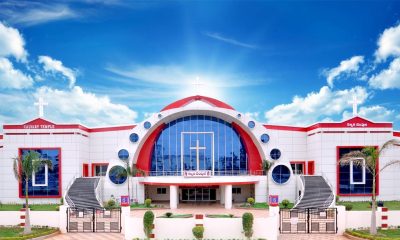
 National12 months ago
National12 months ago300,000-Member Indian Church to Plant 40 More Megachurches
-

 National12 months ago
National12 months agoനെയ്തേലിപ്പടി ക്രൂസേഡിന് അനുഗ്രഹീത സമാപ്തി
-

 Tech8 months ago
Tech8 months agoചിത്രങ്ങൾ എഡിറ്റ് ചെയ്യാം; വാട്സ്ആപ്പിലെ ‘നീല വളയം’ സ്മാർട്ടാകുന്നു, കാര്യമായ മാറ്റങ്ങൾ
-

 Movie3 months ago
Movie3 months agoFor KING + COUNTRY Stars’ Big Plan to Bring Message of Jesus, ‘Redemption of Humanity’ to People Across America
-

 Movie11 months ago
Movie11 months agoActor Ryan Phillippe ‘Craving’ Relationship With God After Movie About Christian Missionary
-

 Articles9 months ago
Articles9 months ago8 ways the Kingdom connects us back to the Garden of Eden

